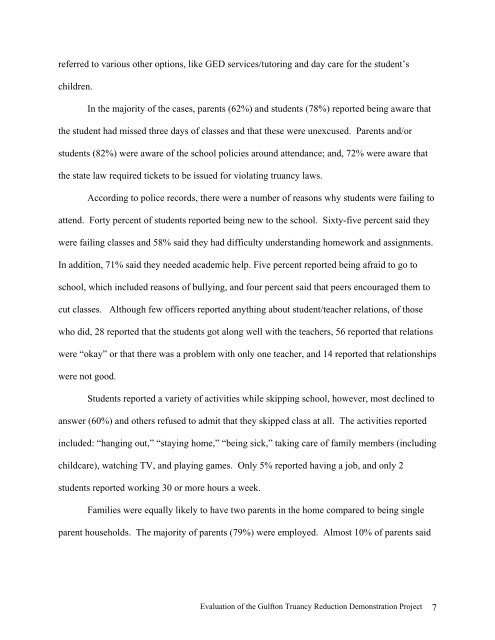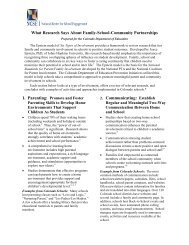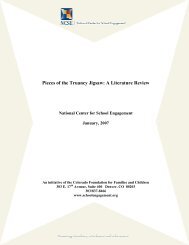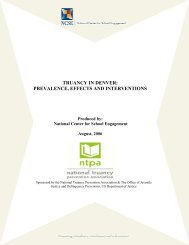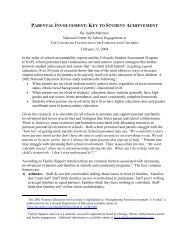Gulfton Truancy Reduction Demonstration Project, Houston, TX
Gulfton Truancy Reduction Demonstration Project, Houston, TX
Gulfton Truancy Reduction Demonstration Project, Houston, TX
You also want an ePaper? Increase the reach of your titles
YUMPU automatically turns print PDFs into web optimized ePapers that Google loves.
eferred to various other options, like GED services/tutoring and day care for the student’s<br />
children.<br />
In the majority of the cases, parents (62%) and students (78%) reported being aware that<br />
the student had missed three days of classes and that these were unexcused. Parents and/or<br />
students (82%) were aware of the school policies around attendance; and, 72% were aware that<br />
the state law required tickets to be issued for violating truancy laws.<br />
According to police records, there were a number of reasons why students were failing to<br />
attend. Forty percent of students reported being new to the school. Sixty-five percent said they<br />
were failing classes and 58% said they had difficulty understanding homework and assignments.<br />
In addition, 71% said they needed academic help. Five percent reported being afraid to go to<br />
school, which included reasons of bullying, and four percent said that peers encouraged them to<br />
cut classes. Although few officers reported anything about student/teacher relations, of those<br />
who did, 28 reported that the students got along well with the teachers, 56 reported that relations<br />
were “okay” or that there was a problem with only one teacher, and 14 reported that relationships<br />
were not good.<br />
Students reported a variety of activities while skipping school, however, most declined to<br />
answer (60%) and others refused to admit that they skipped class at all. The activities reported<br />
included: “hanging out,” “staying home,” “being sick,” taking care of family members (including<br />
childcare), watching TV, and playing games. Only 5% reported having a job, and only 2<br />
students reported working 30 or more hours a week.<br />
Families were equally likely to have two parents in the home compared to being single<br />
parent households. The majority of parents (79%) were employed. Almost 10% of parents said<br />
Evaluation of the <strong>Gulfton</strong> <strong>Truancy</strong> <strong>Reduction</strong> <strong>Demonstration</strong> <strong>Project</strong> 7


